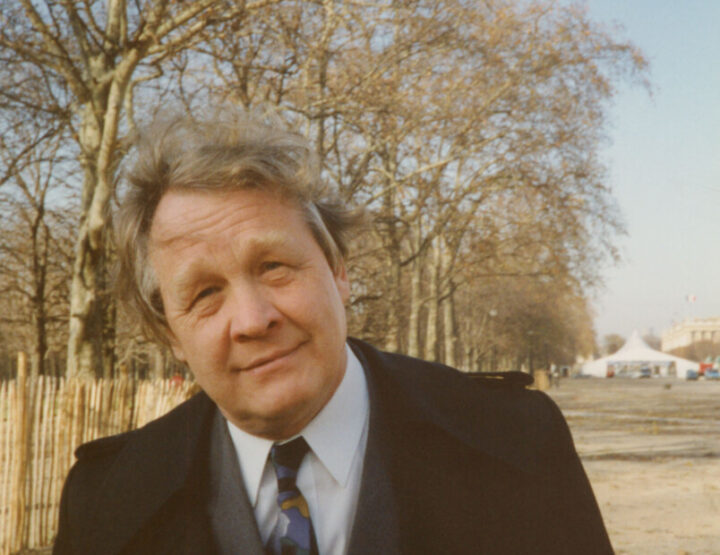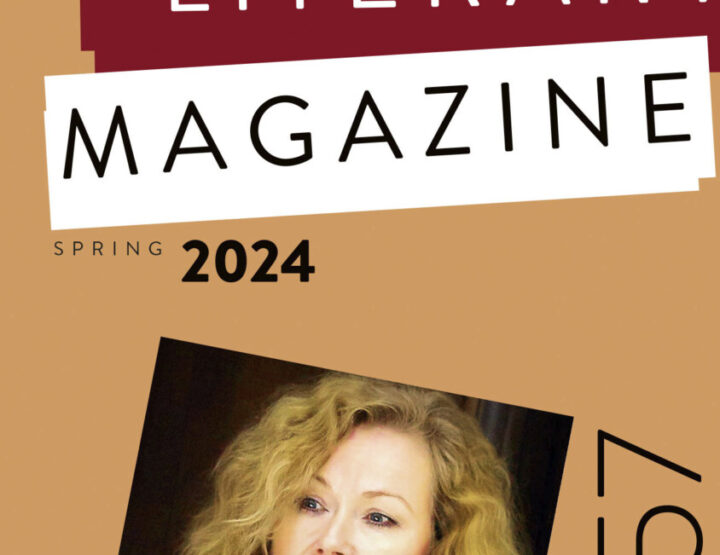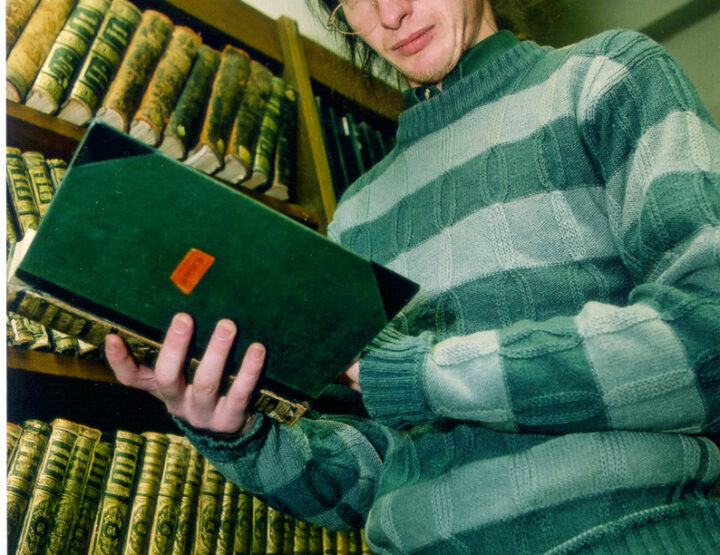The aim of this article is to look at Mustamäe’s metamorphoses during its forty years of existence, the reflections of those metamorphoses in Estonian literature, and the relevant paradoxes.
The Mustamäe district of Tallinn was built on the sandy area between Lilleküla and Nõmme in 1962–1973, the reasons being both the war damage and increasing immigration. The official milestone that prompted the extensive construction activities was the 1957 regulation of the Central Committee of the Estonian Communist Party and the Council of Ministers, which stated that it was necessary to find some ‘Means of developing residential housing in the ESSR’. It identified specific tasks and summed them up in the laconic sentence, ‘Eliminate the shortage of flats within the next 12 years’. The necessary technological basis for this was provided by factories producing large panels, first of all by the Tallinn Construction Plant, which opened in 1961 and started work with the large panel line purchased from France. The plant’s products were determined and limited by standard projects required all over the Soviet Union. The initial architectural idea behind the Mustamäe district was the free planning principle of Le Corbusier (for details, see Kalm 2001).
The building of Mustamäe was connected with a certain rise of positive mood and hope that occurred in the early 1960s. The Stalinist repression was over, a period of thaw was in progress, and life suddenly seemed possible even in the conditions of Soviet regime. At the same time, it can be said, that the construction of Mustamäe meant a construction of a Socialist Utopian City – beautiful, well-designed, full of light – and was closely related to the official socialist belief in progress. In addition to official optimism, the people were also optimistic. This blend of official optimism and looking forward into the future was emphasised, for example, in the murals in the Ehitajate and Akadeemia roads, depicting space flights and sportsmen. The fact that people’s attitude towards Mustamäe was truly positive is evidenced by the huge popularity of the song The Mustamäe Waltz (“I now live in Mustamäe, my flat’s nice and cosy…”). For many, getting a flat in Mustamäe was a chance to escape their cramped quarters in the slums or large shared apartments, and have a place of their own with all modern conveniences. Mustamäe was nothing like Lasnamäe, which was later a huge centre for immigrants; here the number of locals probably exceeded that of immigrants. The Mustamäe of early years was a relatively monolithic, brisk and happy urban district.
Of all Estonian writers, it is Arvo Valton and Mati Unt who have been the most inspired by Mustamäe. Valton’s short story Mustamäe Love (Mustamäe armastus; 1974, see Valton 1974) became chrestomathic soon after its publication, receiving both the Looming and the Tuglas short story awards. Unt’s Autumn Ball (Sügisball; written in 1977, published in 1979, see Unt 1979) was the writer’s first lengthy novel and creates a sweeping map of the changes and tensions brought about by the new residential district.
The depiction of Mustamäe in literature is also associated with various paradoxes.
Mustamäe is a modern project. First, it is architecturally modernist, following the official architectural trend in the Soviet Estonia of the 1960s. Secondly, Mustamäe is essentially modernist, containing the aforementioned optimism, positivism and looking forward into future. Both Valton and Unt also started as modernists in the 1960s, and were the central authors of Estonian modernism. Here lies the first paradox.
It makes sense to assume that the leading modernist authors would have depicted the huge and brilliantly modernist project – Mustamäe – in their best modernist key. It is thus paradoxical that Mustamäe inspired one of the first postmodernist works of Estonian literature. Epp Annus has called them texts created by ‘disappointed modernists’ (Annus 2000: 778).
Modernism and postmodernism in Estonian literature represent an elaborate complex of associations, about which literary scholars have not drawn unanimous conclusions. The 1960s in Estonian literature have certainly been regarded as a modernist era, although one that was different from the typical Western modernism. Estonian modernism did not emphasise aesthetic elitism, rather, it seemed “as if the Estonian modernism of the 1960s managed to unite science, morals, art and everyday reality” (Annus 2000: 773). The reason, of course, was that this was a different social system from that in the West, and one in which national resistance to the ruling system was amplified via culture.
The beginning of postmodernism in Estonian literature is primarily associated with the works of Valton and Unt: the early 1970s saw a certain shift from the clear direction of the 1960s modernism. At the same time, some critics have regarded Unt’s work as a mere continuation of modernism (e.g. Tonts 1995: 631). The work of Unt and Valton has appeared as postmodernist only in recent times, after the subject of postmodernism had also become topical in Estonian literary scholarship.
It must be admitted, however, that Valton’s Mustamäe Love and Unt’s Autumn Ball indeed correspond to all the markings of postmodernist literature. We could mention here the following: irony and parody; scepticism; fragmentariness; fabling; pastiche; multiplicity of styles and images; double-codedness; intertextuality, quotations, and allusions to other culture texts.
According to Epp Annus, Valton’s Mustamäe Love describes a comfortable, most satisfying love-affair between a man and a woman who have contact with each other by looking out of their windows. “Love, the utmost fulfilment of which does not culminate in the inner depths of the body, but on the surface of a look that conceives not inside a female body, but through distanced window frames – it is hard to find a better illustration of a postmodernist depthlessness, a triumph of a surface-life.” (Annus 2000: 778.)
Postmodernist irrationality blends into postmodernist irony, and the final solution – a woman getting pregnant by merely looking at the man through her window, is the pinnacle of postmodernist grotesque.
Valton’s other Mustamäe story, Literary event in Mustamäe, belongs more with postmodernist than modernist stories. In it, an alienating effect is produced by an old Spaniard, who turns up in a flat in Mustamäe. He is like the immortal Ahasuerus who has been looking for Cervantes for 400 years. Here, the author’s position is ironic; it is grotesque that something so irrational can happen in such an orderly place as Mustamäe. Something of the Mustamäe-related positivism, pride and optimism can, however, be seen in the main character Peeter Savi, an insignificant scientist who, in reply to the ghostly Spaniard’s question of what district of the town this was, says, importantly, “”It is Mustamäe””(Valton 1978: 184).
Mati Unt’s Autumn Ball is more sweeping, and grander in form. Its innovativeness was pointed out immediately after its publication. Mati Unt wrote the story when he was living there himself, and defined his initial topic as ‘home, flat and the big city’ (Tonts 1991: 471). The novel lacks a fixed plot; there are six main characters, all of whom live in Mustamäe. They meet only by chance, the entire novel is fragmentary, full of secondary information, intertextual references and allusions. The author retells, at great length, the illusion of illusions – an endless TV soap. All the features point at this being a postmodernist novel.
It is worthwhile here to remember Umberto Eco, for whom the postmodernist novel is characterised by the loss of innocence, meaning that every word and sentence has been already uttered by someone, and its use signifies a reference to all those earlier meanings. The postmodern author, Eco argues, finds that the past is unavoidable, but can be represented and re-employed in a non-innocent, ironic or parodic fashion. A postmodernist writer can thus only write in the ironic key. (Cf. Eco 1985: 67–68.)
Unt’s work is also characterised by the loss of innocence, the author is aware that what he says has been used by someone else before him. Thus Unt heaps into his works layers of quotations and secondary information.
The author’s position in Autumn Ball is certainly postmodernist. At the same time, however, Unt lets his characters see the alienating urban Mustamäe landscape as something brisk and positive. Especially the architect Maurer, himself a creator of Mustamäe, who still sees the place in an optimistic light: “Mustamäe was romantic that night, and Maurer, although not one of the main creators of the neighbourhood, as was pointed out above, was as proud of it as if he were. The moon peeked out from behind the clouds, then disappeared, bringing back days of first love, and the animated landscape, though deserted, possessed for Maurer a sense of rhythm and drama.” (Unt 1985: 47–48.)
Another character, the poet Eero, who has his first flat in Mustamäe, exhibits equal enthusiasm for the district. “He started to visit the [building] site every week, sometimes in the company of his wife, sometimes alone, and sometimes inviting his friends. This was to be his home, sweet home. [—] Soon Eero’s building was completed, too – the first flat that had ever been his alone.” (Unt 1985: 35–36.) And later the poet finds aesthetic experiences and beauty in Mustamäe. “He found the high-rise neighbourhood had its moods and secrets. He watched the awaking and dying of the play of shadows on the crude walls of the prefabricated sections. [—] On hot summer days, the sections of the wall blinded Eero; they resembled white desert towns in the Sahara… Toward evening, the wall sections wilted, still offering some interesting sensations of shade and hue.” (Unt 1985: 8–9.)
In Autumn Ball, Mustamäe, nevertheless, is a separating and even hostile space, the characters remain alone and fail to make contact with others. The author is neither passionate nor sympathetic, but observes the characters with indifference, and occasionally an ironic glance. He merely observes their lives and fates, which finally consist of just coincidences.
The heyday of Mustamäe might well have been the late 1960s and early 1970s. The district was still new, the flats and the surroundings lovingly looked after. Under the conditions of the Soviet power there was really nothing more people could wish for. To live in Mustamäe was quite prestigious. (Of course it was also prestigious to live in some other districts – e.g. the one-family residences in Nõmme and Merivälja).
Today, forty years later, the position of Mustamäe has changed beyond recognition. With its decaying houses – the result primarily of the poor Soviet construction quality and materials – with its shattered doors and corridors stinking of cat piss, overgrown and abandoned grassy areas, beggars and loafers wandering around, Mustamäe has become a parody of its original idea. Murals depicting space flights are crumbling, the one-time fashionable restaurant ‘Kännu Kukk’ stands empty. Mustamäe is turning into a ghetto. In the huge decaying and worm-ridden urban environment, people still protect and line the solitary little islands, their own flats. Mustamäe resembles a collapsing utopia, a City of Sun, that used to be a dream, but has turned into a distorted and warped reality.
Mustamäe has become its own shadow, a postmodernist reflection in a distorting mirror of former modernist aspirations. It no longer represents progressive modernist ideas. It is fragmentary and anarchistic. It has become a bizarre environment, a mixture of different styles and layers.
Maybe I can speculate here a little bit and recall Jean Baudrillard’s idea of simulacrum. As Baudrillard has put it: simulacra are copies of things that no longer have an original. Or take Fredric Jameson: simulacrum is “the identical copy for which no original has ever existed” (Jameson 1999: 18). Mustamäe, after all, lacks its own original, something it was once meant to be – an optimistic, bright, progressive urban district. Now it is only a copy of this vanished idea. It is now like an immense postmodern simulacrum, a miserable copy of its past ideas, without an original, imaginary, empty. Mustamäe is more a dream, a memory of a lost city.
The other paradox is associated with Mustamäe and Estonian literature of the late 20th – early 21st centuries. There are several postmodernist authors in contemporary Estonian literature, including Mati Unt who keeps to the same track. However, the drastic metamorphosis of Mustamäe – turning from modern into postmodernist environment – has attracted no attention whatsoever amongst contemporary Estonian writers.
Writers have forgotten Mustamäe. The authors seem to feel neutral indifference towards it. If someone happens to mention Mustamäe in his work, then only in passing – it is just a place like any other. For example: “I went home to Mustamäe…” (Peeter Sauter). The turn-of-the-century authors get excited about other places: Old Tallinn (Liisi Ojamaa), Kopli (Tarmo Teder), Tallinn in general, without any specification of locality (Toomas Liiv, Anton Nigov, Jürgen Rooste; see also Mihkelev 2002). Lasnamäe has a much more poignant meaning, being now a synonym for a district of immigrants within a nation state. The tension arising from this is described by quite a few writers.
Mustamäe has been marginalized. Mati Unt is one of the few who yet again directs his gaze towards Mustamäe in his 1999 short story “Two Encounters and Their Synthesis” (Unt 1999: 1286–1295). Describing the year 1990, he specifies a spatial background to his stroll: “I walked along a lengthy and straight Mustamäe road, hence in a similar urban district as the aforementioned Lasnamäe, meant only for sleeping. This one here was built earlier, in the 1960s, and contained a kind of human and intimate element. Here and there, the bleak walls were covered with creepers, shops went quietly about their daily business, people seemed to belong here” (Unt 1999: 1289). This is a typical postmodernist short story, about a young Russian man turning into a lovely Estonian girl, and Mustamäe has no other function but to offer a suitable background. Still – on his walk along the Mustamäe road, the main character is taken by surprise: “I raised my head, quite by chance, and saw a red-headed girl in a grey-spotted dress sitting right above me on a pine branch” (Unt 1999: 1290). Mati Unt has obviously not completely forgotten Mustamäe. He is familiar with its charm, possibilities, and openness to irrationality. He knows it all, and is perhaps mourning its past glory and the bright windows in the evening dusk. Unt nevertheless gives one more chance to the pitiful and run-down Mustamäe of the present: he puts the cocoon-girl in his short story up in the tree in Mustamäe road, and there the girl’s voice tells him: “It’s a pity I don’t feel ready to climb down this tree yet, but my dear man – let me stay up here as long as I wish, because I will have plenty of time to be down there where you are” (Unt 1999: 1292).
It is thus paradoxical that during its modernist period Mustamäe inspired the birth of the first Estonian postmodernist works of literature, whereas as a postmodernist phenomenon, it is surrounded, a few exceptions aside, by total silence.
At the same time I certainly hope that this alienating environment can be rehabilitated, and people will again take notice. I wish that Mustamäe did not signify oblivion and decay, but rather a memory of long straight roads, of the evening sky above the high-rise buildings and the bright summer light reflecting off the wide panels.
References
A n n u s, Epp 2000. Postmodernism kui hilissotsialismi kultuuriloogika. – Keel ja Kirjandus, no. 11, pp. 769–780
Eco, Umberto 1985. Reflections on ‘The Name of the Rose’. London: Seeker and Warburg
H a s s a n, Ihab 1987. The Postmodern Turn. Columbus: Ohio State University Press
J a m e s o n, Fredric 1999 (1991). Postmodernism, or, The Cultural Logic of Late Capitalism. London and New York: Verso
K a l m, Mart 2001. Eesti 20. sajandi arhitektuur. Estonian 20th century architecture. Tallinn: Prisma Prindi Kirjastus
M i h k e l e v, Anneli 2002. Texts of Tallinn and Tartu in Estonian Poetry. – Koht ja paik/Place and Location II. Proceedings of the Estonian Academy of Arts 10. Eds. Virve Sarapik, Kadri Tüür, Mari Laanemets. Tallinn: Eesti Kunstiakadeemia, pp. 431–454
T o n t s, Ülo 1991. Mati Unt. – Eesti kirjanduse ajalugu. Vol. V, Book 2. Tallinn: Eesti Raamat, pp. 463–478
T o n t s, Ülo 1995. Mati Unt. – Eesti kirjarahva leksikon. Tallinn: Eesti Raamat, pp. 630–632.
U n t, Mati 1979. Sügisball. Stseenid linnaelust. Tallinn: Eesti Raamat
U n t, Mati 1985. The Autumn Ball. Scenes of City Life. Tallinn: Perioodika
U n t, Mati 1999. Kaks kohtumist ja nende süntees. – Looming, no. 9, pp. 1286–1295
V a l t o n, Arvo 1974. Mustamäe armastus. – Looming, no. 11, pp. 1812–1820
V a l t o n, Arvo 1978. Kirjandussündmus Mustamäel. – Mustamäe armastus. Tallinn: Eesti Raamat, pp. 181–184
The longer version of this article was published in the collection: Koht ja paik / Place and Location. Studies in Environmental Aesthetics and Semiotics III. Eds. V. Sarapik, K. Tüür. Proceedings of the Estonian Academy of Arts 14. Tallinn 2003, pp. 395-403.
© ELM no 21, autumn 2005




